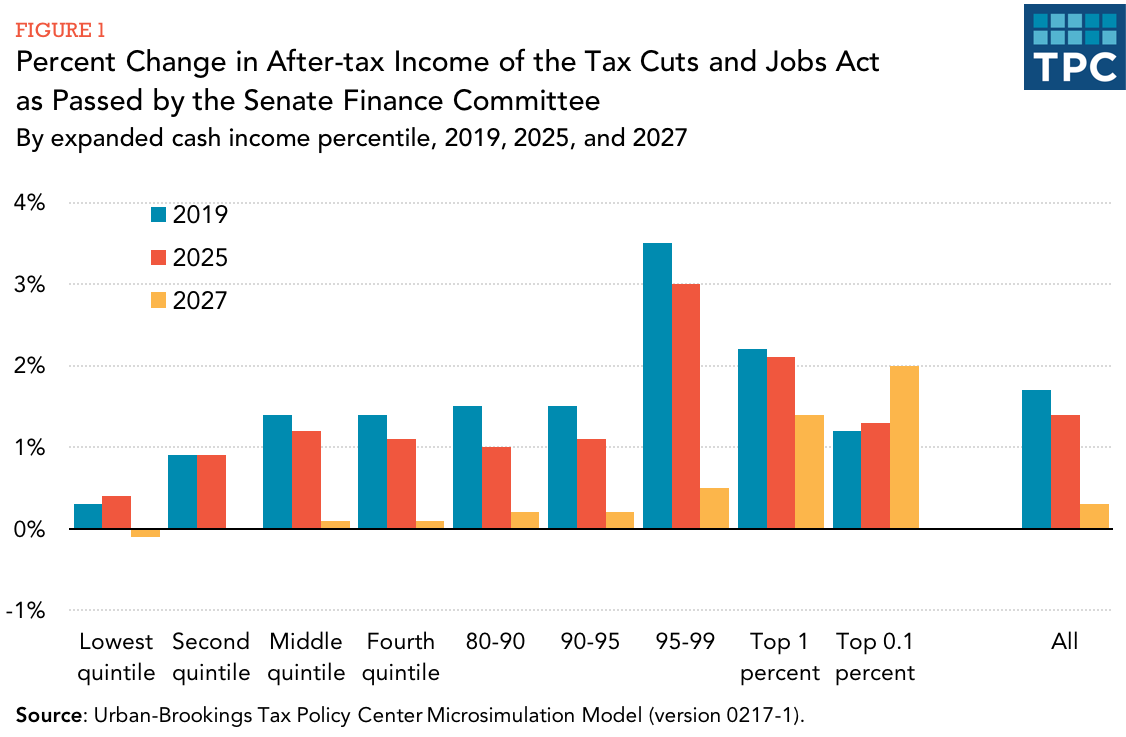The Tax Cuts and Jobs Act is working its way through Congress. On November 9, the House Ways and Means Committee passed a version of the Tax Cuts and Jobs Act (link is external) and the entire US House of Representatives passed its version of the bill (link is external)on November 16. The Senate Finance Committee also passed its version of the Tax Cuts and Jobs Act (link is external) on November 16.
The Tax Policy Center has released distributional estimates of the Tax Cuts and Jobs Act to reflect the bill as passed by the Senate Finance Committee on November 16, 2017. We find the bill would reduce taxes on average for all income groups in both 2019 and 2025. In general, higher income households receive larger average tax cuts as a percentage of after-tax income, with the largest cuts as a share of income going to taxpayers in the 95th to 99th percentiles of the income distribution. On average in 2027, taxes would rise modestly for the lowest-income group, change little for middle-income groups, and decrease for higher-income groups. Compared to current law, 9 percent of taxpayers would pay more in 2019, 12 percent in 2025, and 50 percent in 2027.

TPC has also released an analysis of the macroeconomic effects of the Tax Cuts and Jobs Act as passed by the Senate Finance Committee on November 16, 2017. We find the legislation would boost US gross domestic product (GDP) 0.7 percent in 2018, have little effect on GDP in 2027, and boost GDP 0.1 percent in 2037. The resulting increase in taxable incomes would reduce the revenue loss arising from the legislation by $179 billion from 2018 to 2027. Because most of the tax cuts expire after 2025, we expect deficits (not including interest costs) would decline from 2028 to 2037 and macroeconomic feedback would boost the deficit savings by $34 billion over that interval. Including macroeconomic effects and interest costs, the legislation is projected to increase debt as a share of GDP by over 5 percent in 2027 and by over 4 percent in 2037.
Links to our most recent analyses and detailed tables are below. To brush up on some tax policy basics, or to refer to our previous analyses, see our Prepping for the 2017 Tax Reform Debate collection page.
